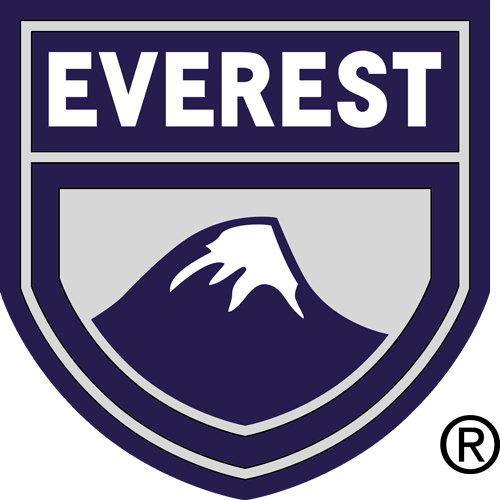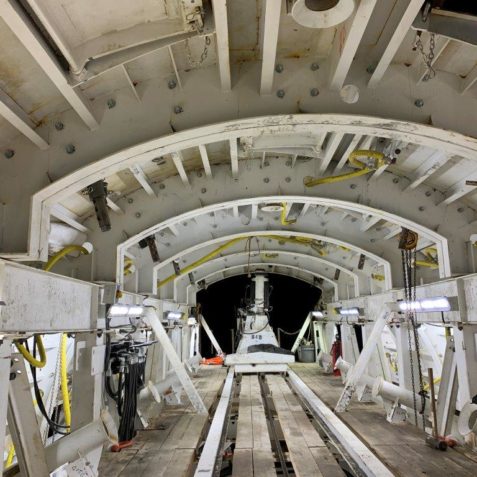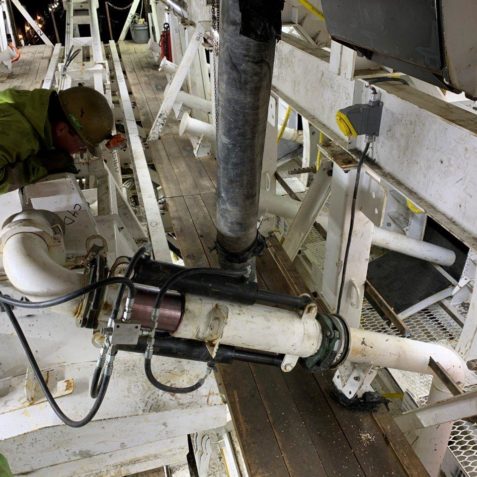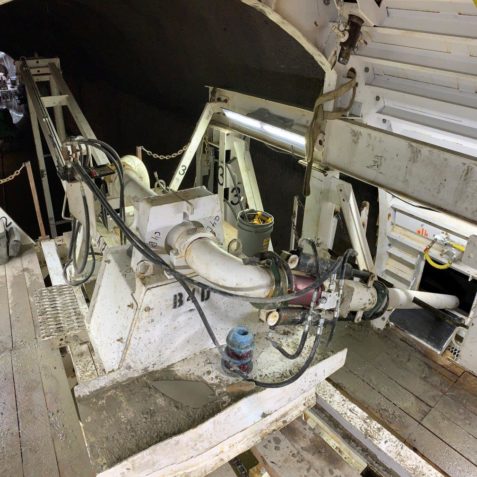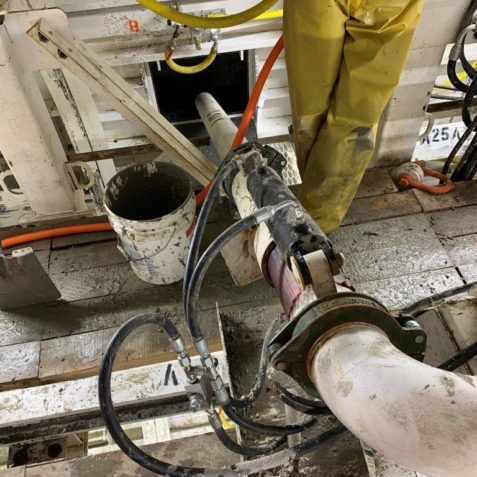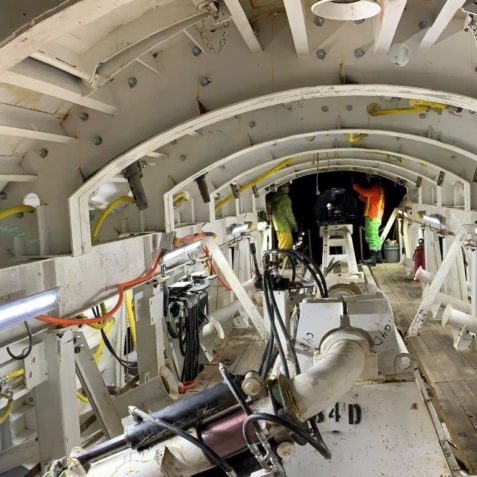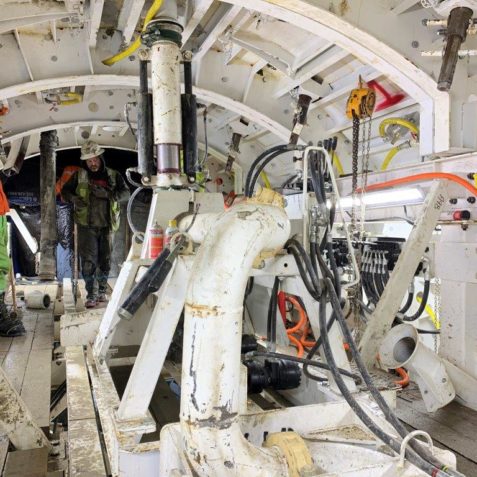
Everest is pleased to announce the launching of its brand new product: a concrete placer for tunnel work. After carefully designing and building it last fall, we finally were able to field test it this winter to construct the TBM tail tunnel of the Doan Valley Storage Tunnel project, located in Cleveland, OH.
The idea popped up from our diverse experience of working on several projects using the most popular placers in the market. The main problem with these placers is that they take up a lot of space; especially when they drag even bulkier scissor pipe assemblies. This hinders the movement of workers, not only during concreting phase, but also during the form setup process. It is also often necessary to store the equipment on mobile platforms between the pours or to manage it with forklifts. These placers are also expensive; not counting the supplier’s commissioning costs. Speaking from our experience, we are forced to make unnecessary design compromises on the formwork and end up wasting valuable time resources for us and our customers because of the coordination with the placer supplier. The result is an okay concrete delivery system and a form that has compromised access. In light of this, we finally decided to design our own independent unit. This enables us to design the formwork and concrete placement system simultaneously. We take 100% control of the geometry in our hands, which allows us to provide a turnkey solution to our valuable clients, in addition to our usual support during the work.
Compact and easy to handle concrete placer
We wanted to design a piece of compact equipment that spares as much space as possible for the tunneling personnel. We also wanted an efficient tool that has the ability to coexist with the formwork at all times. We replaced the scissors with a 3-segment arm which can also be stepped over when the placer is at the end of its travel and hangs in the air when the placer is retracted. We also wanted to control the entire pour process starting from the carrier platform, without ever having to disconnect a concrete supply pipe.
You can see in the photos that the formwork’s invert and sides are concreted with steel pipes that originate from the platform of the carrier. As soon as we have finished pouring through these pipes, we clean them with a water hose and close the door. These pipes are thin and lightweight, since the pressure of the concrete is almost atmospheric, and they are easy to handle by hand. The crown of the form is poured through the guillotine valves as usual. However, we plan on integrating a small portable hydraulic cylinder, connected to the placer, to open and close the guillotines effortlessly. We also plan to integrate a hydraulic guillotine valve at the entrance of the placer to isolate the concrete line, in order to avoid any overflow during movements, which can happen if the concrete pump is significantly higher than the form, such as when at the ground surface. Also, since the carrier already has its hydraulic power unit, we feed it via the same system, with the use of a safety isolation valve. We do this to eliminate any risk associated with moving the carrier or the stripping cylinders during the pouring process. Our team at Everest and the clients we work for are delighted with the final results. The placer works smoothly, operates efficiently, and our customers are overall satisfied with it.
Do you want to know more about this newly introduced, convenient solution by Everest, which has brilliantly transformed the lives of our clients as well as ours? If that’s the case, don’t hesitate to get in contact with one of our team experts today, and we will be more than happy to assist you.
